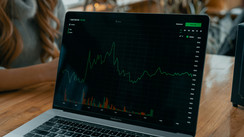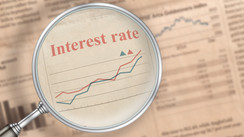The vast economic landscape is peppered with a multitude of metrics, collectively known as economic indicators. These are essentially the pulse checkers of an economy. They serve as indispensable statistical yardsticks that provide invaluable insights into the economy's present health and potential future trajectory.
- Economic indicators are akin to the economy's diagnostic report, offering detailed insights into its operations.
- These critical indicators come in two main varieties: leading and lagging, depending on their predictive prowess.
Leading economic indicators are forward-looking metrics that pivot before the economy at large demonstrates a discernible shift. They serve as the economy's crystal ball, providing glimpses of future economic conditions even before they materialize. In contrast, lagging economic indicators offer a rear-view mirror perspective, furnishing details of economic events that have already transpired.
- Leading indicators are significant forecasting tools. These are the indicators that savvy investors closely monitor and decode. By leveraging the predictive capabilities of these indicators, investors can anticipate economic trends and refine their investment strategies accordingly.
As we delve deeper into the realm of economic indicators, it becomes apparent that these are more than mere numbers on a balance sheet. They are vital tools that aid in shaping economic policy, directing investment decisions, and ultimately steering the economic future of a nation. So let's move on to examine these leading indicators in greater depth.
What Are Leading Economic Indicators? An In-depth Look
Stepping into the realm of economic indicators, we encounter invaluable statistical data released by various entities, including governments, private sector companies, and non-profit organizations. These indicators offer a snapshot of the economic climate and are typically categorized by their timing:
- Anticipatory indicators or leading indicators act as a beacon, illuminating forthcoming economic conditions.
- Reflective indicators or lagging indicators act as a rear-view mirror, presenting a retrospective analysis of recent economic events.
Among these, it's the leading economic indicators that capture the undivided attention of economists and investors. These indicators, with their prophetic insights into economic growth, business profitability, and stock market trends, provide an invaluable tool for those navigating the financial markets.
Leading indicators generally encompass:
- Jobless claims
- Consumer sentiment
- Building authorizations
- Inventory modifications
- Stock market trends
Alterations in these metrics offer hints of imminent shifts in the larger economy. Take, for example, the Consumer Confidence Index (CCI), which stems from the Consumer Confidence Survey conducted by the Conference Board. This index is a reflection of existing business conditions and potential economic changes on the horizon.
The CCI report underscores consumer perspectives, future spending plans, and anticipations about stock prices, inflation, and interest rates. For instance, in April 2022, the CCI witnessed a dip to 107.3 (1985=100) from its previous high of over 120 in 2021, indicating a drop in consumer confidence. Nevertheless, a substantial majority, over half of the surveyed consumers, reported a flourishing job market.
Understanding the Function of Leading Economic Indicators
Leading economic indicators act as an early-warning system, flashing signs of economic transitions even before they manifest in their corresponding lagging indicators. Consider the example of jobless claims. An uptick in these claims might take a few weeks to resonate in the unemployment rate. Hence, jobless claims serve as the leading indicator, while the unemployment rate becomes the lagging counterpart.
Leading indicators hold a significant sway over market sentiments. If these indicators underperform expectations, it might be the harbinger of a bearish trend in the economy. On the flip side, indicators exceeding their projections might hint at a bullish trend brewing.
Central banks also draw on leading indicators to shape monetary policy. For example, if these indicators hint at an economic downturn, a central bank might choose to slash interest rates or implement easing policies. Conversely, if the indicators portray an economic upturn, the central bank might adopt a more conservative stance.
Investors might react to these policy changes by selling equities when interest rates ascend or buying more when rates plummet.
The Value of Leading Economic Indicators for Investors
Mastering the art of interpreting leading economic indicators can empower you to make judicious financial decisions. These indicators provide valuable insights into the broader economy and specific sectors:
- A dwindling manufacturing output could herald a decline in retail sales, as retailers prune their inventory.
- This dip in retail sales could consequently pull down revenues across the retail sector.
In such situations, investors might choose to offload retail stocks and other consumer discretionary equities. Depending on your financial aspirations, you might opt to sell before an economic downturn or wait for the dip to buy valuable stocks at discounted rates.
Certain indicators can exert varying impacts on different types of investments. For instance, gold often responds positively to unfavorable economic data due to its status as a safe haven.
How you harness leading indicators depends largely on your financial objectives and the nature of your investments. Hence, gaining a comprehensive understanding of these indicators becomes of paramount importance.
For a panoramic view of leading economic indicators, you might consider consulting advance reports compiled by the U.S. Census Bureau.
Diverse Leading Economic Indicators
Crucial leading economic indicators encompass:
- The monthly unemployment rate and average earnings
- Initial applications for state unemployment benefits
- Consumer goods and materials spending, including manufacturer shipments, inventories, and orders
- Expenditure on non-defense capital goods, encompassing manufacturer shipments, inventories, and orders
- Building permits and new private housing projects
- The gap between 10-year Treasury Bill interest rates and the federal funds rate
- The central bank's inflation-adjusted measure of the M2 money supply
- The ISM manufacturing index, including supplier deliveries, imports, production, inventories, new orders, new export orders, order backlogs, prices, and employment
- The S&P 500 index
- Consumer expectation metrics
It's worth mentioning that the Conference Board, a non-governmental entity, has created a leading economic index in the U.S., known as the Conference Board Leading Economic Index. This index integrates all the economic indicators listed above.
These indicators can be used individually to scrutinize specific sectors of the U.S. economy, or jointly to offer a comprehensive image of the broader U.S. economy.
International investors can discover these types of aggregate leading economic indicators in numerous other countries worldwide or collate this information from individual economic indicators provided by non-profit organizations and governments.





